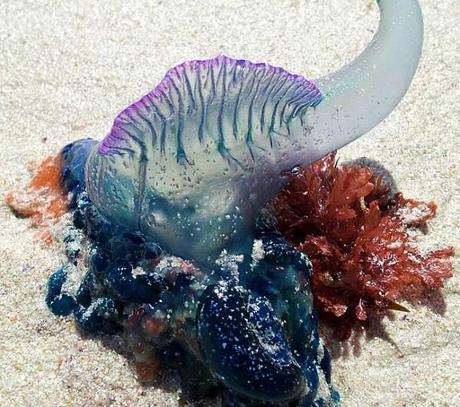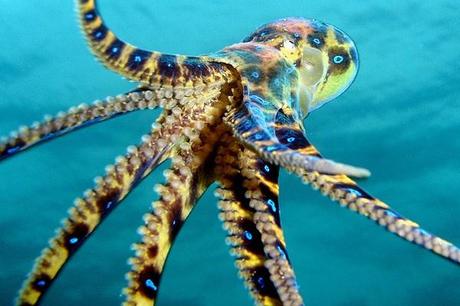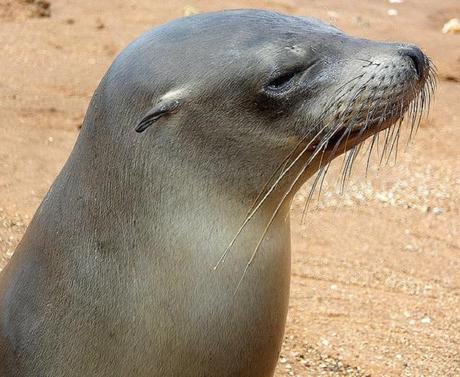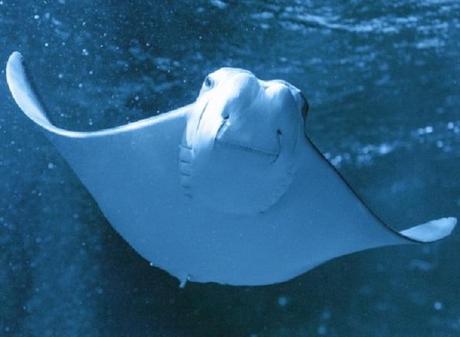As serene and inviting as the ocean floors might seem, you have to bear in mind that this environment is also very dangerous, some of the world’s deadliest creatures can be found in the sea or bottom of our oceans. Surprisingly, not all of them are what you might expect in terms of size, some of the world’s deadliest sea animals could be as small as baseball in terms of size, and animals like tiger sharks could be as long as 5m in length. Here’s a look at the deadliest sea creatures living in the water. This list is subjective but we’ve taken our time to conduct research here to find out the creatures of the deep ocean floors that conjure the most compelling combination of aggression, fear, real pain or even death in some cases to humans…
Sea Snake
Even when included with the land-going species, the sea snake still remains the most venomous snake on the planet. The amount of venom a sea snake could inject is enough to make the king cobra look like a harmless earthworm, just a few milligrams of its venom is strong enough to kill up to one thousand people! The sea snake also known as hydrophone or coral reef snakes are a subfamily of venomous elapid snakes. Though they evolved from terrestrial ancestors, most are adapted to aquatic life and are unable to move on land. They are commonly found throughout waters off South East Asia and Northern Australia.

Marbled Cone Snail
The brightly coloured shell of the marbled cone snail entices people to pick it up, not knowing that the animal is one of the most venomous sea creatures in the world. The marbled cone snail can be found in the waters of Okinawa, the southern tip of India, and the southeast section of New Caledonia and Samoa. The marbled cone snail uses its harpoon-like proboscis to strike its prey and would-be predators with a deadly mixture of neurotoxins.
It uses its deadly harpoon to paralyze its prey, devouring it at its own leisure. Getting stung by one of these cone snails can prove to be fatal, as the venom causes muscle paralysis and respiratory failure. There’s no antivenom currently available for cone snail stings. Instead, various treatments can be administered until the toxin wears off. So the next time you see this beautiful shell by the beach, make sure to stay away.
Stone Fish
The stonefish really has to be one of the ugliest fish I have ever seen, it doesn’t attack you but you don’t just want to step on it, it is usually found in the shallow waters of the tropics and ranges throughout the pacific and Indian oceans, the red sea and the great barrier reef, it looks unattractive with a skin that looks like a rock. Basically, its poison causes severe pain and can sometimes cause shock, paralysis, tissue death and death if not treated, it can also result in other complications if treatment is not offered quickly and its pain is so excruciating that the victim might find himself or herself begging for the affected limb to be amputated.
Salt Water Crocodile
The saltwater crocodile is found on the eastern coast of India, South East Asia stretching south to northern Australia and the eastern coast of Africa. The saltwater crocodile is a formidable and adaptable predator, capable of taking almost any animal that enters its territory. It is an ambush predator waiting for the best opportunity to strike. Its teeth are not designed to rip flesh but rather to hold onto the prey item, which reduces the animal’s chance of escape. These properties allow the crocodile to catch and drag the animal into the water, and then the prey is swallowed whole or torn into pieces. The saltwater crocodile is considered as the most dangerous species of crocodile to humans.

Blue Ringed Octopus
With no more than 8 inches in length, the blue-ringed octopus is endowed with enough venom to kill a human-actually, they have enough venom to kill nearly 30 humans in just a matter of few minutes. They are recognized as some of the world’s most venomous marine creatures. Even though they are so small in size and relatively docile in nature, their venom is 10,000 more powerful than cyanide. Bile from blue-ringed octopus will result in paralysis and if medication is not administered right away will definitely result in death. It might also shock you to know that the bite itself is painless meaning that you may not even be aware that you’ve been injected until you start feeling the symptoms. Since the blue-ringed octopus only bites if provoked, keeping your distance is the best treatment of all, especially since there is no anti-venom at all for this deadly sea creature.
Box Jelly Fish
The box jellyfish (also known as a sea wasp) is a very dangerous creature that inhabits the northeast areas of Australia. The jellyfish has extreme 60mins present on its tentacles, which when in contact with a human, can stop cardio-respiratory function within three minutes. According to the U.S National foundation, 20 to 40 people die from stings by box jellyfish every year in the Philippines alone. The box jellyfish has enough venom to kill 60 adult humans within the shortest possible time. Its venom attacks the heart, nervous system, and skin cells hence it is considered to be among the most deadly in the world. It is so overpoweringly painful that human victims have been known to go into shock and drown or die of heart failure before even reaching the shore.

Sea Lion
Sea lions are characterized by external ear flaps, long fore flippers, the ability to walk on all four and short, thick hair. They are trainable and are a major attraction at zoos but have been known to bite people. Sea lions are usually playful; however, they can be territorial and dangerous, especially during mating season. In as much as they are trainable, they can attack humans as well. Some local scientists said that sea lion behavior is unpredictable and can become suddenly aggressive.
Puffer Fish
Puffer fish contains a toxin that is deadly to humans. There is enough toxin in one puffer fish to kill 30 people and there is no known antidote. Ironically these fishes are considered a delicacy in Japan despite the fact that one bad cut means certain death.
The puffer fish contains a poison that is deadly to humans. This deadly poison called tetrodotoxin (TTX) is contained in this fat-bodied fish. This toxin is said to be more powerful than cyanide and is enough to kill 30 people at a go. It results in difficulty in breathing on a person before leading to death.
CatFish
Surprised? Yes, they appear very innocent, looking very harmless and peace-loving with their little and cute whiskers. On the other way round, they can be very dangerous especially when provoked. The catfish reacts when threatened, it does this by pulling from the back and side fins of three of its barbed spines. It might also interest you to know that its venom can still be active even after death.

Stingray
As deadly as the stingray might be, it only attacks in self-defence maybe when accidentally stepped on. For it to attack, it needs to be directly opposite its victim to enable it to flip its long tail from the back and then strike its victim in front. The mechanism involved is that the stingray strikes with its tail and the force with which the sting tail enters the victim’s body cause its protective sheet to tear, hence the venom flows out into the victim’s wound. But it does not end there, in as much as the venom is deadly, pulling its sting out of the victim’s body can be very rough, rough enough to cause death.

